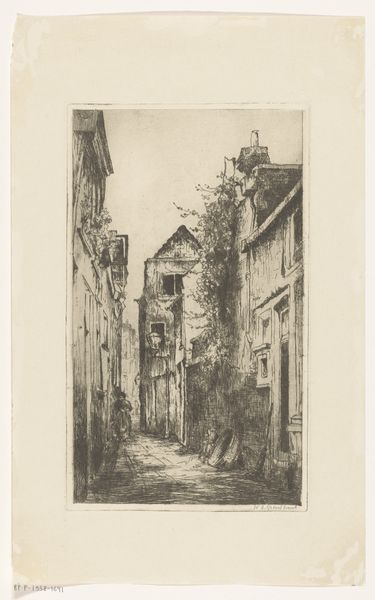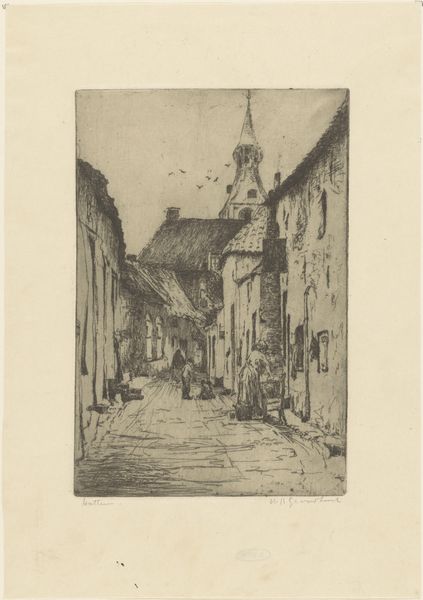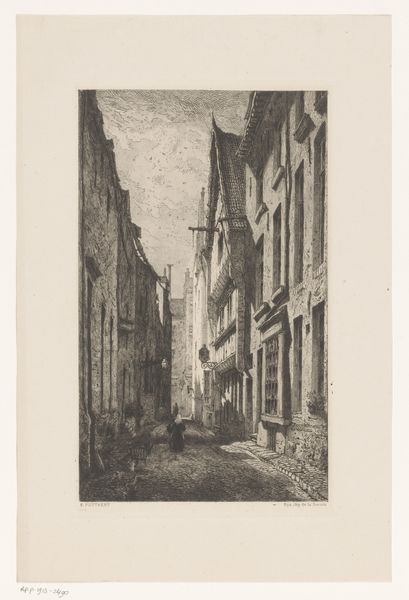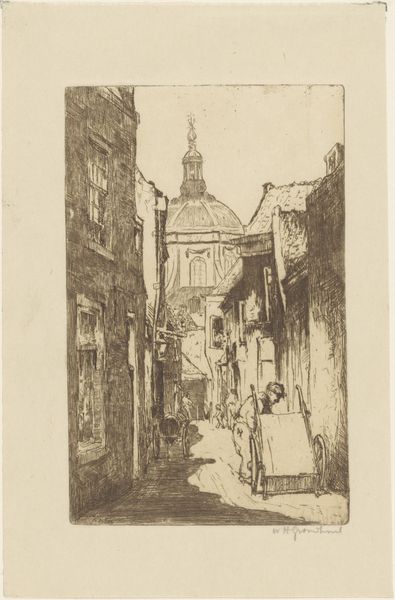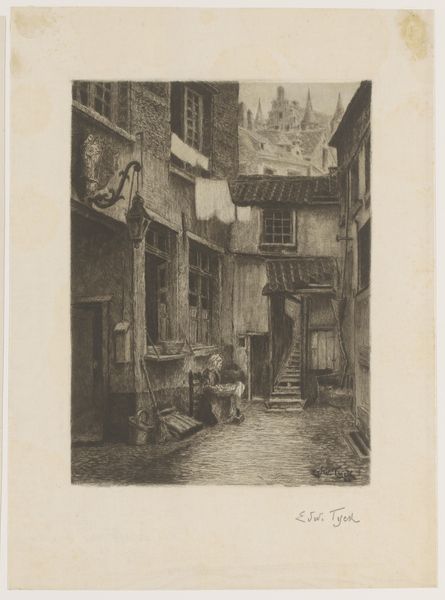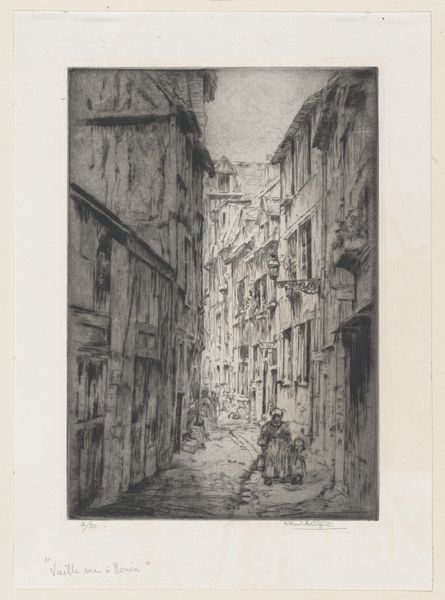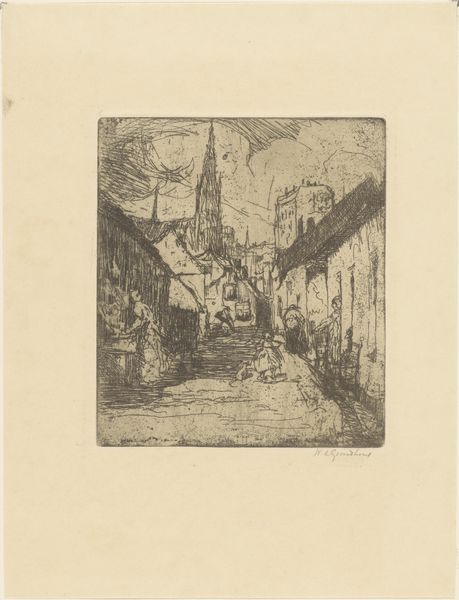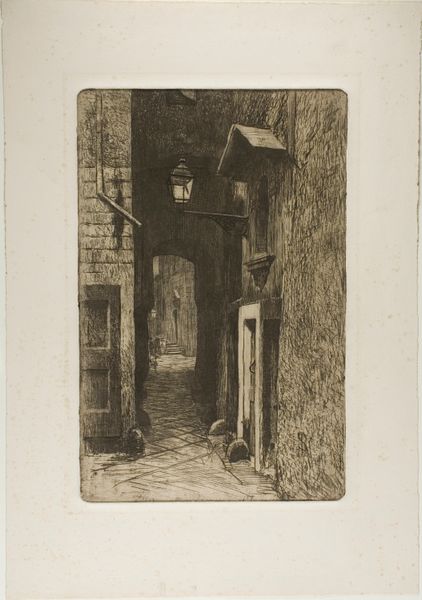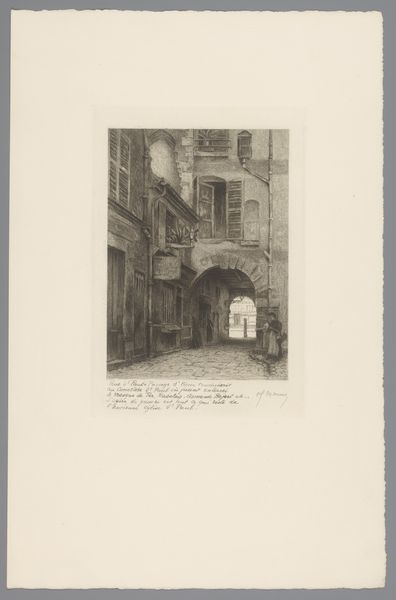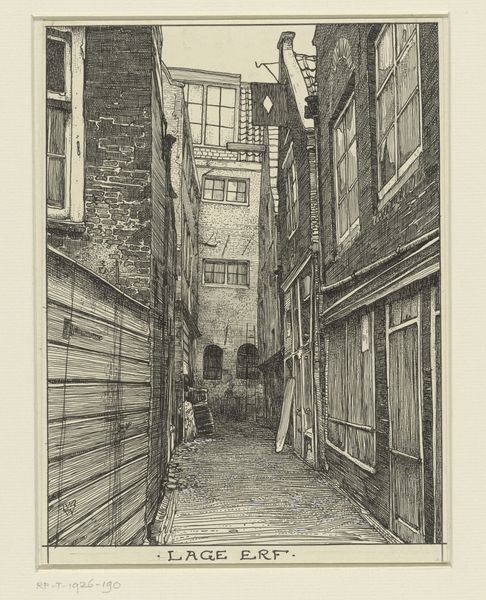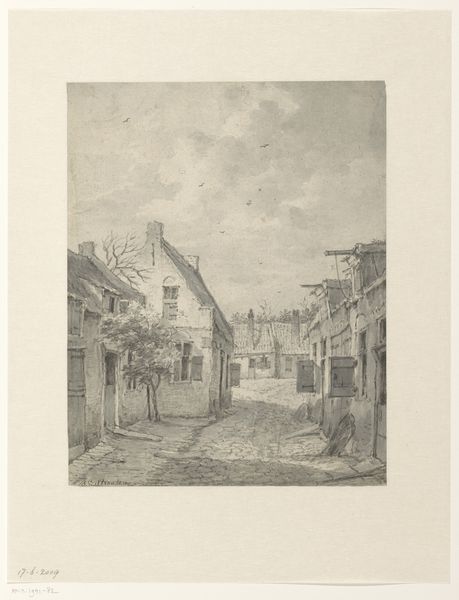
print, etching
#
aged paper
#
16_19th-century
# print
#
etching
#
cityscape
#
realism
Dimensions: image: 11.3 × 9.2 cm (4 7/16 × 3 5/8 in.) sheet: 25 × 16.2 cm (9 13/16 × 6 3/8 in.)
Copyright: National Gallery of Art: CC0 1.0
Curator: This print by Maxime Lalanne, made in 1866, is called "Passage de la Marmite, Paris". He rendered it using etching. Editor: The stark contrast really draws me in. The deep shadows create an almost claustrophobic atmosphere in this narrow passage. It feels like a stage for something unsettling. Curator: I can see that. The high contrast can reference the concept of light overcoming darkness, which mirrors our modern understanding of the enlightenment; perhaps it is a reference to Parisian society overcoming the turmoil of the mid-19th century? There’s a powerful sense of the everyman as a protagonist here, perhaps? Editor: Right, and the presence of ordinary Parisians reinforces a narrative of resilience amid industrialization and social restructuring, or possibly of urban alienation. Their blurred figures contrast with the architectural harshness, a tangible effect of being swept up by modernity. It's interesting to consider how passages such as this were, at the time, conduits for commerce and socialization. Curator: Absolutely, these covered walkways were indeed very potent symbols of Parisian identity and economic ambition. By the nineteenth century, these served as sheltered micro-economies, often hosting alternative services beyond just conventional storefront retail activity. It is possible that these spaces served as the root of the underground activism that would eventually result in the Belle Époque. Editor: That’s a rich point. Looking closer at the architectural detail, those layers of what appears to be scaffolding really underline a sense of continual transition. It’s as if the city is permanently under construction—or maybe permanently under repair from previous unrest. Curator: Well, whether literally under construction or metaphorically still resolving civil concerns from previous generations, Lalanne has captured the dynamism of a rapidly transforming city and period through symbolism alone. I notice this element across a lot of his prints, but never so intimately. Editor: This makes me think more broadly about the function of memory and identity. Maybe it reflects the broader societal grappling with national identity amidst political strife. Curator: Yes, ultimately this little print carries so much about both the hope and burden of building a modern identity, as well as nationhood at that moment. Editor: It just makes me wonder, you know, who these people were in that specific passageway.
Comments
No comments
Be the first to comment and join the conversation on the ultimate creative platform.
